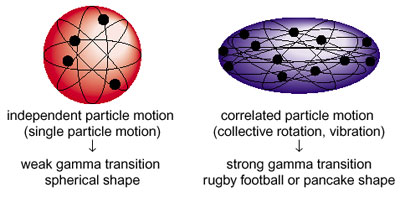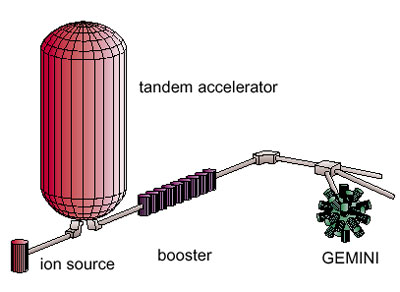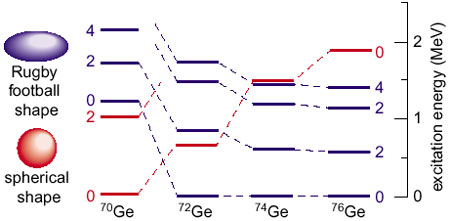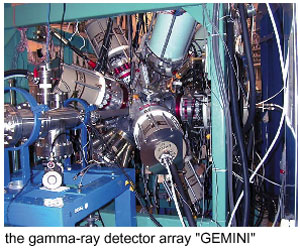The size of the atomic nucleus is on the order of 10-12 cm, so that its shape cannot be seen, even with sophisticated optical devices like microscopes. Instead, the shape is probed by means of the level structures of excited states of an assumed nuclear model. But since there is no nuclear model which can describe nuclear structure completely, the interpretation of such data for the shapes of nuclei remains ambiguous.
Recently, we have succeeded in developing a new technique of "complete" (i.e., comprehensive) spectroscopy utilizing Coulomb excitations, which enables us to determine nuclear shapes without relying on nuclear models. A nucleus of interest will be accelerated and impacted onto a lead target, at which point it is excited by a strong Coulomb field produced between the beam and target nuclei. The nuclear excitation process can be analyzed to determine all the electromagnetic properties (transition probabilities and quadrupole moments) for all the low-lying states. These quantities can then be used directly to derive nuclear shape parameters. With this approach we have made a complete spectroscopy experiment on Ge isotopes utilizing the gamma-ray detector array "GEMINI" at the tandem accelerator in Tokai. As a result we have been able to derive the shape parameters of all excited states up to an energy of 2 MeV.
The results show that there are different shapes coexisting in the same nucleus, and that the isotope dependence of the level structures is found to be related to shape-dependent behavior of the various states. |




